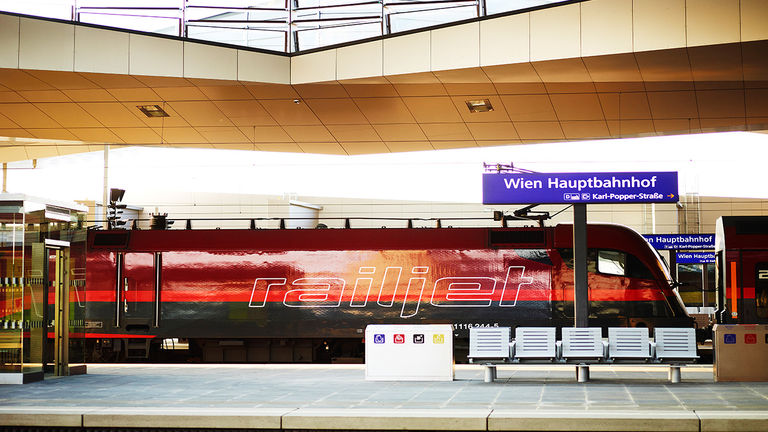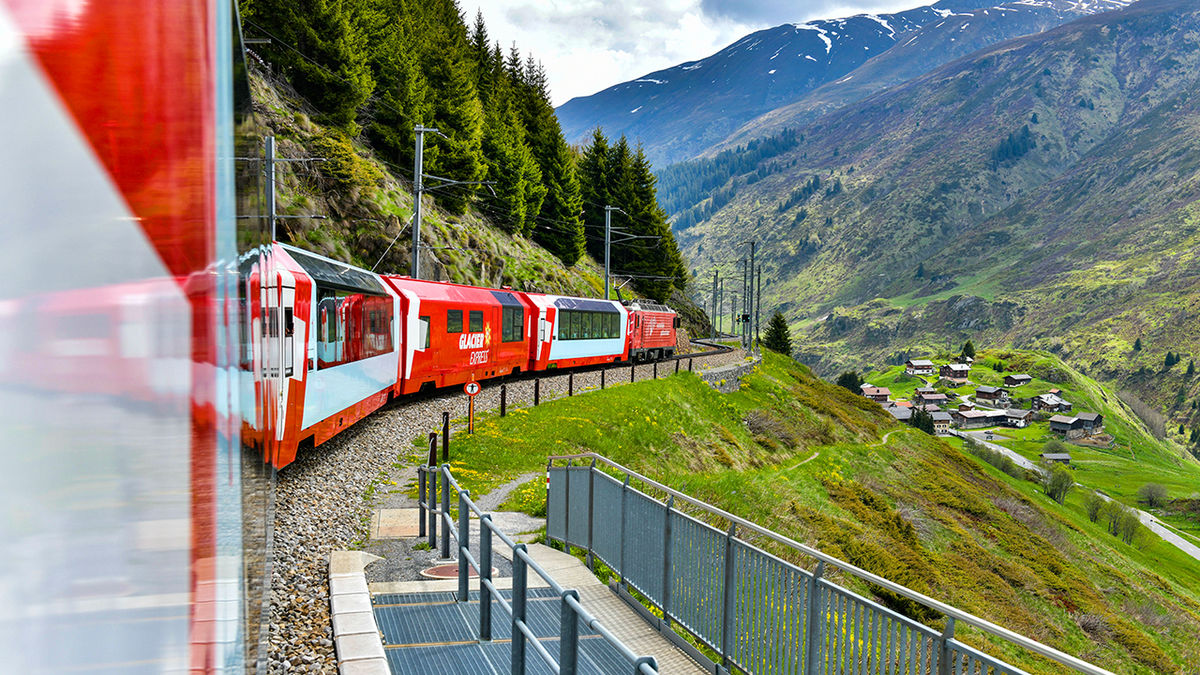From Eurostar to the Glacier Express, travel advisors will find the vast majority of European railway options on global platform Rail Europe. Founded in the U.S. in the 1930s, Rail Europe has been helping consumers and advisors navigate Europe’s myriad rail options for decades. In the U.S. alone, Rail Europe serves more than 10,000 B2B partners.
Given the incredible influx of travel to Europe post-pandemic, we reached out to Björn Bender, CEO and executive chairman of Rail Europe, to gather insights on market trends and hear how the platform supports advisors as they handle increased demand for the continent.
Credit: 2024 Rail Europe
For any advisor who hasn’t worked with Rail Europe yet, what should they know?
We are a one-stop shop, offering all rail providers in Europe. Our role is to provide an agnostic platform, where people can compare routes, especially when traveling across borders. Traveling internationally by rail in Europe can be a bit tricky, because of different currencies, languages and systems; Rail Europe gathers all this information within one platform, with B2B and B2C channels, so users compare journeys, compare fares and see what’s best if traveling as a family or solo.
The full portfolio includes more than 200 European rail providers, and that’s our advantage — no one else is doing this on that level in the B2B world. We provide advisors full content and full inventory of what Europe has to offer, and for competitive markets like Italy and Spain, where you have different rail providers, it’s getting trickier [to navigate], even for Europeans.
How does Rail Europe support advisors and their clients?
We want to be part of the packages advisors create, from point-to-point tickets to rail passes. We see that the market and travelers are getting more and more mature; they’re traveling to Europe for their fifth or tenth time, and they’re looking to put together puzzle pieces by themselves. This is a huge opportunity for point-to-point, versus the pass product.
We want to be part of the packages advisors create, from point-to-point tickets to rail passes.
So, we talk about having a global product with a local footprint, with local teams. We have an American team, spread all over the U.S. and specifically divided into regions, from Florida to the West Coast. Our team can also be relied on for centralized help out of our head office in Paris.
Advisors who have worked with Rail Europe for decades knew the company as being divided, but this is not the case anymore. We are centralized in Paris, but marketing and other members are in the markets they serve. This allows a different level of quality. And we have centralized our customer service, in the English language, with 24/7 service. We invested a lot in technology, too, but we are not missing the human part.
With travel to Europe as high as it’s been as of late, what patterns, or reactions to that demand, is Rail Europe seeing?
If we compare our company figures from 2022 to 2023, we’re talking about 60% growth year over year. Of course, those 2022 numbers were impacted by the pandemic, but that’s high growth. And tourists from the U.S. and beyond are looking for cross-border services at a faster rate, so the European industry is looking to put more demand on less-frequented routes and departure times, and getting into the shoulder seasons, too. There’s a lot of balancing, and of course the sports events are impacting Europe this year — not only the Olympics but also the European Football Championship in Germany. So, lots of Europeans are traveling, too, and we advise all travel agents to give this [information] to their customers.

Credit: 2024 Rail Europe
Certain railways in Europe are well-known for their incredible views. What routes or trips should advisors know about — especially some that get clients out of the crowds?
I almost live on the train, I say — I travel almost 80,000 kilometers per year by train. And Switzerland is amazing in terms of train travel. I still love to travel here, even though I live here; it’s hard to focus on work when the scenery is passing by. I love to go from Bern to Montreux, which is near Lake Geneva. And it’s not a high-demand route.
RELATED: An Insider’s Guide to Geneva, Switzerland
In Scotland, you might combine whiskey tasting with a train journey. In the south of Italy, there are lovely trains — from Naples to Syracuse, the coastal train route is absolutely amazing. I also love the Nordic countries; train travel up to Stockholm might mean seeing the Northern Lights out of the window.
And we see, specifically from the American market, that people are looking for [these types of routes]. They have seen London, Paris and Rome. All the boxes are ticked, and now they want to see Eastern Europe: Prague, Budapest, Stockholm and Copenhagen. They go to Amsterdam more, and to northern Germany. And it’s our job to make [these choices] more visible.
Is the sustainability of train travel driving any demand?
Sustainability means a lot to us. For the U.S. market, I’ll point to two things. First, even if the numbers are growing and demand is high out of the U.S., we still have a lot of educating to do, and advisors do, too. We have to explain what train travel in Europe means, because you cannot compare the Amtrak offering to the European rail offering. You have to explain what it means to travel high-speed from London to Paris, from Brussels to Paris. Many of these travelers are used to taking buses during European travel — that was more cost efficient, and they weren’t thinking as much about carbon footprint.
RELATED: How to Better Understand – and Book – Sustainable Travel
Train travel is clean and the most sustainable mode of transport, but we know that when it comes to why someone chooses a specific mode of transport, sustainability is not in the top three. The top three criteria are price, safety and convenience. So, we are focusing mostly on convenience. We are a distribution platform, with no impact on price, and we don’t operate the trains, so we have no impact on safety. We do have a huge impact on convenience, by reducing the entry barrier and improving accessibility to every fare. And then, if we focus on this, we do have an impact on sustainability.
Then, [we can teach clients] that train travel is fast and reliable in Europe — such as London to Paris in two hours and 15 minutes, or Brussels to Amsterdam in one hour and 30 minutes. Travel distances and travel times by train cannot compare to flights and buses; Americans might think, “If I take a flight, it’s faster.” But not in Europe, where the airports are far from the city center and it takes four or six hours total to arrive.
And, adding more convenience, Rail Europe is now offering seat reservations for pass holders.
This was one of the biggest pain points, and one that has blocked people from buying passes. If you have the Eurail pass, for example, you feel free, but you need to understand that there are different systems in Europe. You can buy your pass in Germany, Switzerland or Austria, and you can board every train, even if you don’t have a seat. But there are closed systems, such as in Spain or France, that work like the airline industry; as in, you cannot even board the platform if you don’t have a reservation. If the train is full, and every seat is occupied, you cannot get in.
So, to avoid queueing for hours to get a seat reservation, we now have this functionality embedded in our booking environment for B2B and B2C users. This is a huge part of improving convenience.
Additionally, we’re trying to get every European rail operator into our system. We’ve added Austrian Railways, and Austria is an important connecting dot to Eastern European destinations such as Hungary or Prague. It’s a huge step to have the full OBB (Austrian Railways) in our system.
What rail systems are in your sights?
We still have some spots in Eastern Europe we need. We don’t cover Croatia point-to-point yet, or Portugal or Finland, but we’re working on it. We see demand changing, and we want to meet that. So, we are taking customer feedback directly to our product roadmap.

